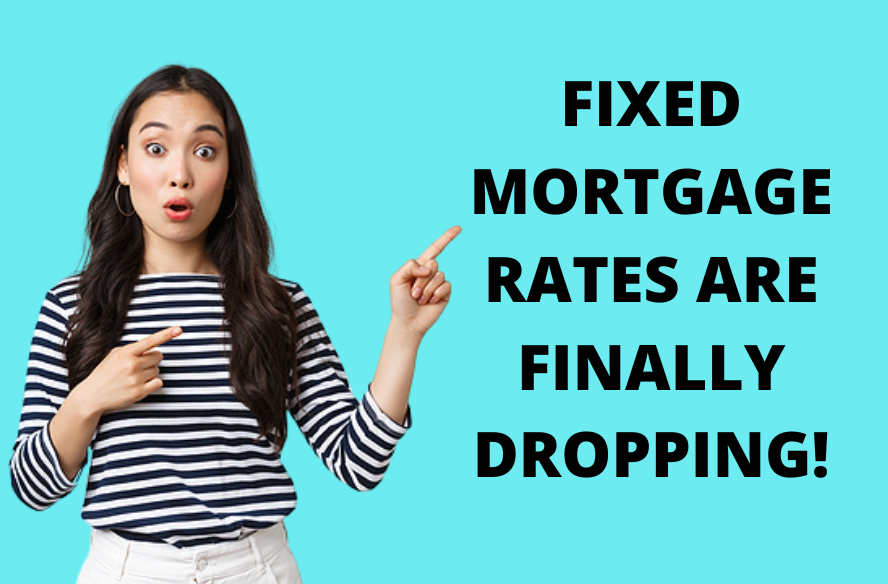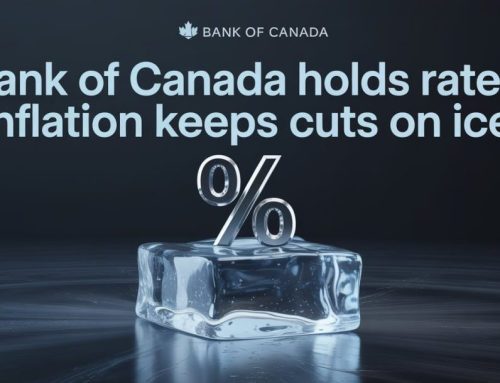Since October 2021, fixed mortgage rates have been stuck a seemingly never-ending upward trend resulting in increases of more than 3.00%.
Fortunately, it looks as though the upward trend has come to an end.
This leads to a few questions:
Why are they dropping?
How much have they dropped?
How much lower can we expect them to go?
Firstly, we’ll take a closer look at how fixed mortgage rates are determined.
How Lenders Price Fixed Rate Mortgages
A lender’s profit on fixed mortgage rates is closely tied to bond yields. As the yields increase, the lender’s profit shrinks which then places upward pressure on fixed rates. The opposite happens when they drop.
It’s important to note that this is not a hard and fast rule and is more of a guide.
A rising bond yield doesn’t mean that we’ll automatically see an increase to fixed rates, just as a dropping bond yield doesn’t mean that we’ll automatically see a decrease. There will always be times when mortgage lenders will operate on thinner margins, just as there are times when they need to keep their margins higher. This is usually the case when the market is particularly volatile which can lead to lenders adding a risk premium.
The bond yields have been trending downward for the last six weeks and have now dropped roughly 21% since their peak on June 14th. Lenders were hesitant to lower their rates and were holding onto higher risk premiums. However, they have now started to come through with the cuts.
They have not dropped in all categories though…. But why?
Mortgage lenders will set their rates based on their cost of funds. Bond yields are one of the key factors in determining their cost, but not the only one. Let me further explain.
Most people are clear that a purchase with less than 20% down payment will require mortgage default insurance such as CMHC. What they are not aware of is that that many lenders will also look to insure mortgages with 20% or greater down payment on the back end. There is no cost to the borrower as the lender pays the premium. Even though they are flipping the bill, this will lower their cost of funds, which they can then pass onto the borrower in the form of a lower rate.
This is what is referred to as an insurable mortgage, which must meet the following criteria:
- Purchase price under $1 million
- 25 year maximum amortization
- Owner occupied
It’s in this category where rates have dropped by 0.25% to 0.30% with most lenders.
The rate has not yet changed for uninsurable mortgages. As lenders are not able to insure them on the back end, their cost of funds is higher which is directly reflected in the mortgage rate.
Purchases over $1 million, or mortgages with an amortization greater than 25 years would be considered uninsurable. This increases their cost of funds, which is why they often carry higher rates.
Mortgage rates in this category are now carrying added risk premiums, which is why their rates have not yet dropped. But it is just a matter of time.
I explain insurable and uninsurable mortgages in detail in my blog on Why Different People Are Quoted Different Rates.
There are currently 5 year fixed rates as low as 4.38% for insured and insurable mortgages while uninsurable rates are as low as 5.14%.
That’s a difference of 0.76%! Pretty substantial, and rarely are they this far apart.
How Much Lower Can We Expect Rates To Fall?
Even with the recent drops to fixed mortgage rates, there is still room for them to fall further. Rates in all categories should be in the low to mid-4% range, however, risk premiums added to all fixed rate categories are keeping them higher than they should be given the current conditions.
The downward trend in bond yields does not seem to be over. If they continue to fall, then further drops to fixed mortgage rates can be expected.
The last time the bond yields were at today’s level was on June 1st, when 5 year fixed mortgage rates were as low as 3.79%. It’s possible that we could see fixed rates fall back to this point soon, or even lower. Time will tell of course.
Why Are Bond Yields Falling?
As many are aware, inflation is responsible for driving mortgage rates up to where they are today. However, economic concerns are shifting from inflation to a weakening economy that could lead to a recession. This is what has been driving the down the bond yields which is bringing fixed mortgage rates along for the ride.
It’s not likely that these economic concerns will disappear anytime soon, which would mean that the downward trend should continue. However, inflation and other unforeseen events can change the direction at any time. Time will tell and anything can happen.
Bank of Canada Rate Increases
While fixed rates are now trending downward, this doesn’t mean that the Bank of Canada is finished with their increases. Economists from the big six banks are predicting that the BOC will increase their rate by another 0.50% to 1.00% by the end of 2023. Eventually, this trend will reverse as well. At which time, anyone currently in a variable rate mortgage can then start to enjoy the ride back down. This is expected to happen at some point in 2024.
Conclusion
As I’ve been saying for a while, the faster and more aggressive the Bank of Canada gets with their rate increases, the sooner they will need to cut their rate. The same applies with fixed mortgage rates.
Trends are just that. They are trends.
Eventually, they will shift and start moving in the opposite direction which is what we are now seeing with fixed rates.
We’ll eventually see this happen with the Bank of Canada rate as well.








Leave A Comment